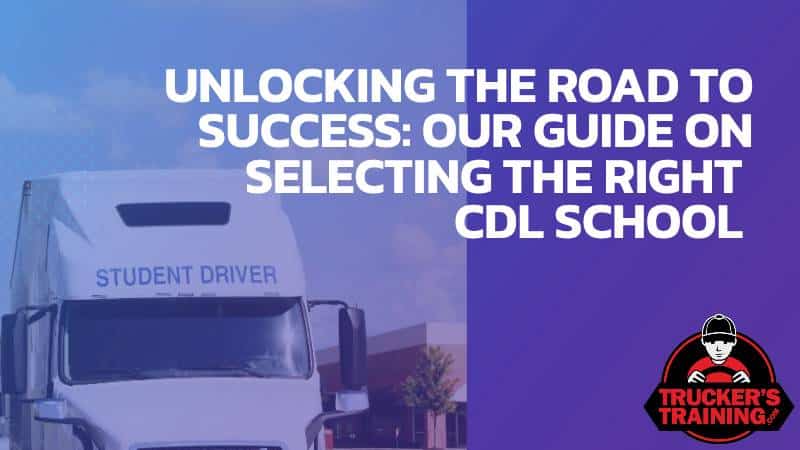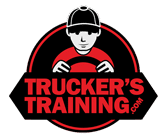
Truck drivers are essential to the economy as they are responsible for transporting goods across the far reaches of the country, yet there is still labor shortage in the industry. There are steps being made to increase the number of truck drivers, such as creating more CDL training opportunities and increasing CDL issuance efficiencies, so now more than ever is a great time to pursue a career as a truck driver.
If you want to become a professional truck driver, then you need to select a truck driving school that is right for you. You may find that there are many different truck driving schools to choose from, so it is important to do your research. Below are some tips to help you select the right truck driving school in your area.
CDL Tuition Cost
The cost of trucking school is a big factor in the decision process. The CDL tuition price can be as low as $1,500 to as high as $12,000, however, the average cost to attend truck driving school in the United States is between $3,000 to $7,000.
If the cost of trucking school is a little too rich, do not be discouraged. Decent CDL schools will often work with their students’ budgets by offering various financial assistance options to those who qualify. The expense of going to school might be reduced with the assistance of:
- Student financial aid
- State and federal grants
- Trucking scholarships
- Student loans
Federal financial aid can include federal student loans and grants to help offset your CDL tuition if you display great financial need. To qualify, fill out the FAFSA and/or check with the school’s financial aid office.
Also, we have put together a CDL grants and scholarships guide to help you identify what you are eligible for.
Gain Truck Driving Skills
Not all CDL training programs are the same. At the very least, the truck driver training must meet the minimum Federal curriculum requirements for Entry-level Driver Training (ELDT) applicants seeking a Class A CDL (see table below).
Class A CDL ELDT Curriculum Requirements
| Class A CDL ELDT Curriculum Requirements | ||||||
|---|---|---|---|---|---|---|
| Theory | ||||||
| Basic Operation | Orientation | |||||
| Control Systems/Dashboard | ||||||
| Pre- and Post-Trip Inspections | ||||||
| Basic Control | ||||||
| Shifting/Operating Transmissions | ||||||
| Backing and Docking | ||||||
| Coupling and Uncoupling | ||||||
| Safe Operating Procedures | Visual Search | |||||
| Communication | ||||||
| Distracted Driving | ||||||
| Speed Management | ||||||
| Space Management | ||||||
| Night Operation | ||||||
| Extreme Driving Conditions | ||||||
| Advanced Operating Practices | Hazard Perception | |||||
| Skid Control/Recovery, Jackknifing, | ||||||
| and Other Emergencies | ||||||
| Railroad-Highway Grade Crossings | ||||||
| Vehicle Systems and Reporting Malfunctions | Identification and Diagnosis of Malfunctions | |||||
| Roadside Inspections | ||||||
| Maintenance | ||||||
| Non-Driving Activities | Handling and Documenting Cargo | |||||
| Environmental Compliance Issues | ||||||
| Hours of Service Requirements | ||||||
| Fatigue and Wellness Awareness | ||||||
| Post-Crash Procedures | ||||||
| External Communications | ||||||
| Whistleblower/Coercion | ||||||
| Trip Planning | ||||||
| Drugs/Alcohol | ||||||
| Medical Requirements | ||||||
| Behind-the-Wheel (BTW) Range | Vehicle Inspection Pre-Trip/Enroute/Post-Trip | |||||
| Straight Line Backing | ||||||
| Alley Dock Backing (45/90 Degree) | ||||||
| Off-Set Backing | ||||||
| Parallel Parking Blind Side | ||||||
| Parallel Parking Sight Side | ||||||
| Coupling and Uncoupling | ||||||
| Behind-the-Wheel (BTW) Public Road | Vehicle Controls Including: Left Turns, Right Turns, Lane Changes, Curves at Highway Speeds, and Entry and Exit on the Interstate or Controlled Access Highway | |||||
| Shifting/Transmission | ||||||
| Communications/Signaling | ||||||
| Visual Search | ||||||
| Speed and Space Management | ||||||
| Safe Driver Behavior | ||||||
| Hours of Service (HOS) Requirements | ||||||
| Hazard Perception | ||||||
| Railroad (RR)-Highway Grade Crossing | ||||||
| Night Operation | ||||||
| Extreme Driving Conditions | ||||||
| Skid Control/Recovery, Jackknifing, and Other Emergencies | ||||||
| Source: FMCSA |
Most trucking schools offer training that can be completed within 4 to 6 weeks. There are CDL training that covers much more than the basic training curriculum. These professional truck driver training programs are considered the masters degree in trucking, that generally take several months to complete.
They may include endorsements such as Tank, Doubles/Triples and Hazardous Material, externships with a reputable trucking company, and a deep-dive on the trucking industry. They not only help you gain above and beyond driving skills, but can also prepare you for a driving career as an owner operator.
If this is the type of training you want, you need to consider the time and financial commitment it would take. The great thing with these pricey CDL programs is that they may qualify for the federal financial aid. See below examples.
Setting You Up with a Truck Driving Job
A great truck driving school should include job placement assistance, which is a crucial factor for those looking to start a career in the trucking industry. The school’s job placement service ensures that graduates are offered truck driving employment opportunities and start working right after graduation. This can be especially helpful for individuals who do not have connections or previous experience in the trucking industry.
The job placement assistance offered by truck driving schools can take different forms. Some schools may have partnerships with trucking companies and help students connect with potential employers. Others may provide resources such as resume building workshops, interview preparation guidance, and job fairs where students can meet and network with recruiters from various trucking employers.
CDL Training Facilities
Up-to-date training facilities and commercial vehicles are important for a great truck driving school experience. They serve as the practical foundation where students apply theoretical knowledge, gain hands-on experience, and hone their driving skills.
State-of-the-art facilities provide real-world scenarios that enhance learning, expose students to diverse situations they might encounter on the road, and equip them with the confidence to handle situations effectively.
Furthermore, well-maintained trucks to practice in can help to ensure safe and efficient learning. It also underscores the trucking school’s commitment to meeting industry standards and strengthening the students’ potential for employment upon graduation. Semi-trucks that are too old for training aren’t the ideal option since you will need to utilize vehicles that are similar to those you will be using on the job when you are ready for the working world.
Conclusion
A great truck driving school goes beyond just teaching students how to operate a truck. It should provide financial assistance options, job placement services, have modern training facilities, offer comprehensive classroom instruction and specialized training programs, and continue to support alumni even after graduation.
By choosing a reputable truck driving school with these features and benefits, you can set yourself up for success in the trucking industry and embark on a truck driving career. But do your research first, and invest in a truck driving school that will help you achieve your goals of becoming a professional truck driver.

Marina was in corporate communications for over 15 years before becoming a freelance writer for TruckersTraining.com. She's been writing about transportation, and the supply chain and trucking industry for over five years. Her father was in the trucking and logging business which exposed her to the industry. Her passions include travel, nature and entrepreneurship.
